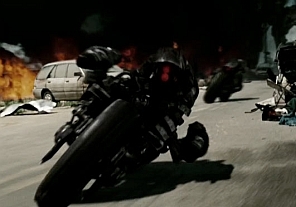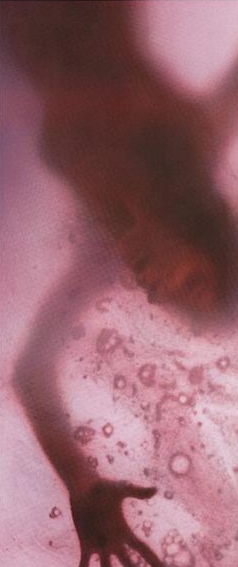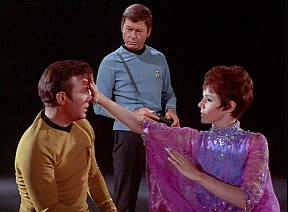For Tiamat’s Throne, I want to accomplish three things:
1. Create an interesting sandbox setting for sci-fi/fantasy gaming.
2. Increase the amount of narrative control the players have over in-game events.
3. Reduce the prevalence of binary action resolution.
I think I’ve got a pretty good handle on number one. The handles for numbers two and three, however, were proving rather slippery. I want something that can be attached to Stars Without Number (SWN) with a minimum of disruption to the core rules.
In other words, the narrative control elements need to be like a prepositional phrase in a sentence. You can remove a prepositional phrase from a sentence and still have a sentence. Whatever I add for narrative control needs to be the sort of thing that can be left out of the game completely without impacting playability. This way, a gaming group that doesn’t like changing the scope of narrative control can still use SWN and Tiamat’s Throne without having to rewrite the rules.
Dungeon World (DW) appears to provide the means by which I can accomplish goals two and three in one fell swoop. Let’s look at how this might work with combat.
Success, but…!
In DW, failure within a certain range below the target number isn’t necessarily a failure. (I’m thinking the range will be within 3 points of the target number for combat rolls.) Let’s call this kind of failure a qualified success. When a qualified success occurs, the player should have a choice between at least two options, one of which grants a some degree of success coupled with a negative consequence. The exact nature of the qualified success depends on the player’s narrative input, and it starts with in-game narration of the desired action. For example:
GM: While you’re in the corner trying to open the door into the abandoned station, you hear a hiss just in time to turn and see a Denebian ripper lunging out of the mist, claws extended and jaw snapping.
Player: Ag! I duck out of the way, trying to get behind the beast while blazing away with my automag.
GM: Sounds good. Roll away. Three defense checks versus 25 and one attack roll versus AC 5.
Player: Three! Yipes! *dice clatter* Defense is 25, 22, and 7. Crap. Attack is a 12, which means I hit AC 8, even with burst fire.
GM: You easily evade the first attack. The other two, not so much. You can get behind the beast, but you’ll get raked by a claw in the process, or you can stay in front of it but avoid the claws entirely.
Player: Let’s get behind it. I don’t want to be pinned into the corner.
GM: Alright. You also get bit. The ripper’s claws and fangs tear through your flesh as you dive around it. *dice clatter* Take 7 points of damage. The beast now has its back to you. The impact and injury spoils your aim, but your attack roll is a qualified success. Thoughts?
Player: How about I still hit, but I slip and end up on my back?
GM: Sounds fair. The bullets thud into the ripper’s hide as your rush by. Unfortunately, you only make it about fifteen feet before you lose your footing on the icy ground.
Considerations
As with DW, this sort of action resolution pretty much removes many considerations related to initiative and tactical movement from the game. The same idea can also be applied to saving throws and skill checks, but the qualified success range for skill checks probably needs to be more narrow since skill checks are based on 2d6 rather than 1d20.
More thoughts on this topic will be forthcoming.
Tags: game play, Stars Without Number, Tiamat's Throne
 New Dawn Syndicate Terminator Drone
New Dawn Syndicate Terminator Drone A sarpashana, or poison eater, is an aggressive colony of disparate microbes that have mutated to excrete and survive within a protoplasmic medium. This creature appears to be a bulging, surging mass of blotchy, semi-transparent ooze. At rest, a sarpashana would just about fill a 125-cubic-foot container. It weighs approximately 1,400 pounds, but has it has enough bouyancy to swim clumsily. Its protoplasmic mass has sufficient cohesion and strength to climb up walls, but is still fluid enough to ooze through spaces no larger than the diameter of a adult’s little finger.
A sarpashana, or poison eater, is an aggressive colony of disparate microbes that have mutated to excrete and survive within a protoplasmic medium. This creature appears to be a bulging, surging mass of blotchy, semi-transparent ooze. At rest, a sarpashana would just about fill a 125-cubic-foot container. It weighs approximately 1,400 pounds, but has it has enough bouyancy to swim clumsily. Its protoplasmic mass has sufficient cohesion and strength to climb up walls, but is still fluid enough to ooze through spaces no larger than the diameter of a adult’s little finger. Empathy
Empathy The badlands world of Rigel presents several challenges to its population. The absence of indigenous life above the microbial level means that food must be either imported from off-world or grown locally from non-native stocks.
The badlands world of Rigel presents several challenges to its population. The absence of indigenous life above the microbial level means that food must be either imported from off-world or grown locally from non-native stocks.